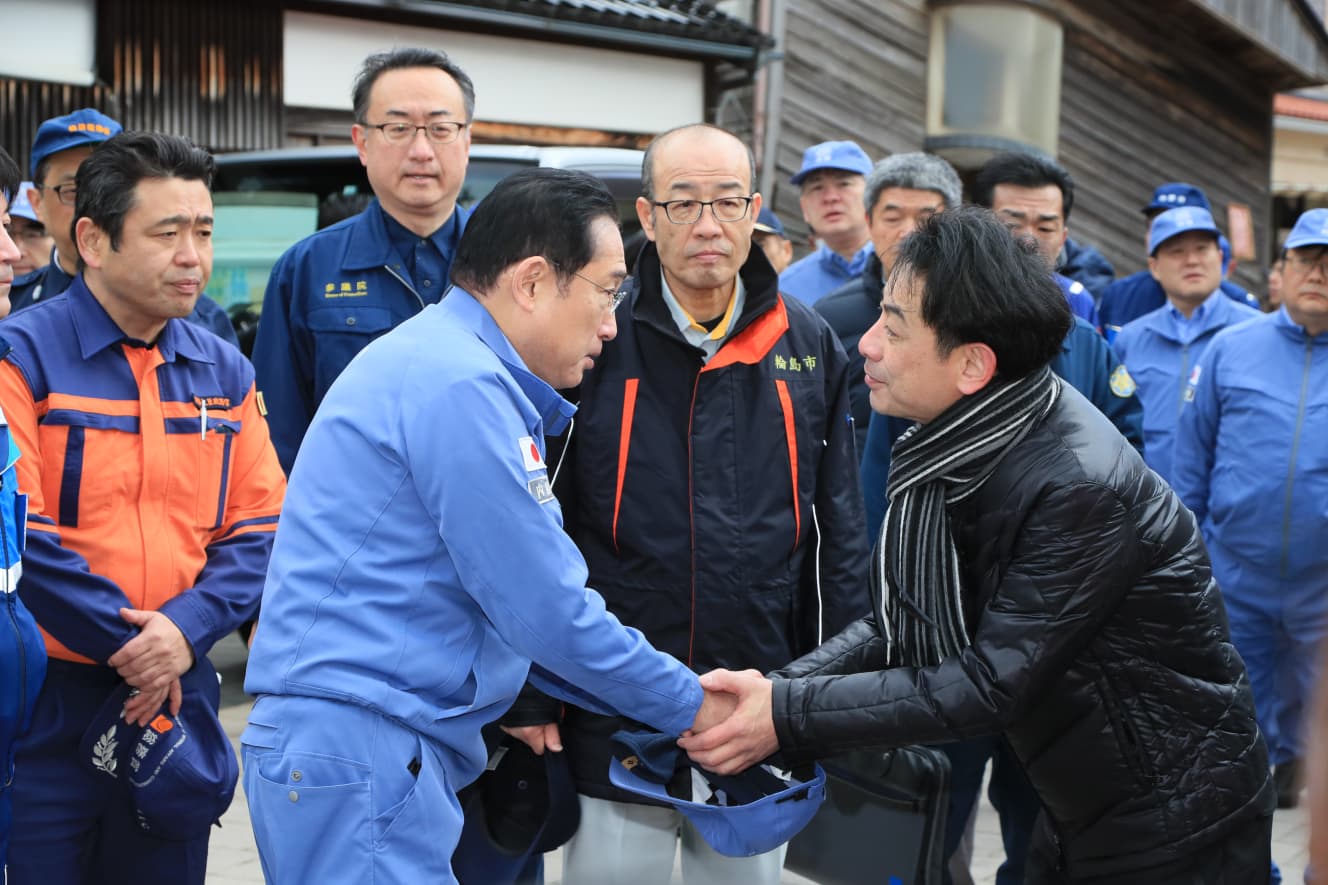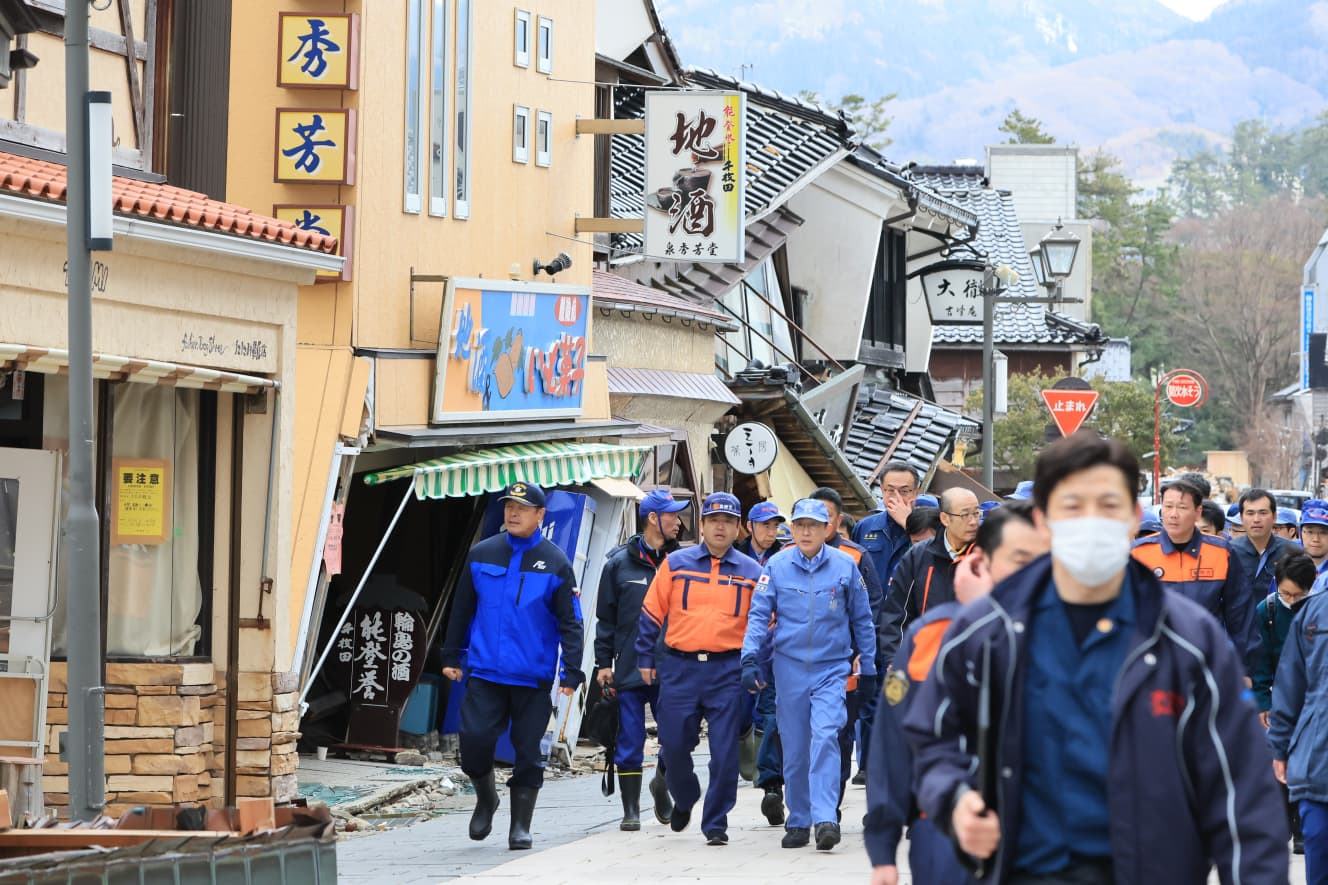I wanted him to see more of the disaster-stricken areas.” Prime Minister Kishida’s second visit to the disaster-stricken areas was still too hasty…lamented the victims.
On February 24, Prime Minister Kishida made his second visit to disaster-stricken areas in the Noto Peninsula.
Unlike the January visit, this time he visited several disaster-stricken sites by land, in addition to visiting evacuation centers, and had a round-table talk with Wajima lacquerware craftsmen.
After arriving at Noto Airport, which resumed operations on January 27 by Air Self-Defense Force transport plane around 9:30 a.m., the Prime Minister and his delegation drove into Anamizu Town, arriving at an evacuation center around 10:10 a.m. After meeting with evacuees and disaster relief volunteers at the shelter, they left the area before 10:30 a.m. and traveled to Wajima City.
Although the roads in the Noto Peninsula have been improved since immediately after the disaster, they are still rough, and the travel conditions are still not smooth.
In Wajima City, after first visiting the Public Works Office, the group went to Shirone Senmaida, located about 30 minutes by car from Wajima City, to inspect the damage to the terraced rice paddies.
After that, they visited emergency temporary housing set up in a commercial facility at Wajima Port, exchanged opinions with disaster victims, inspected Wajima Fishing Port, and then moved on to the site of the damaged morning market.
The order of the inspection sites was changed at the last minute from the originally scheduled locations, and security guards dispatched from Aichi and Toyama, who had been on standby at the receiving site, had to move to a different site in a hurry.
When the Prime Minister and his delegation arrived at the morning market, they had a relatively relaxed conversation with members of the morning market cooperative, who welcomed them and asked about the damage, and even took a commemorative photo with them.
The Prime Minister said to the morning market union leaders, “We will make every effort to improve the support environment so that business can be restored as soon as possible.
We spoke to some of the women union members who had exchanged words with the Prime Minister.
We are very grateful that the prime minister came to see the site directly. I asked the government to provide more support because there is a limit to what the prefectural government can do. But since they came all the way here (to the morning market), I wanted them to go deeper and take a closer look at the current situation, not just around the entrance. The deeper you go, the more dire the situation is.”
The people who were doing first aid work on the roofs in the area also said
I wondered what was going on because so many people suddenly came, but I was surprised because I didn’t know the prime minister was here. If I had known, I would have expressed my various requests to him.
If I had known, I would have conveyed various requests to him.
After a short break at the prefectural civil engineering office, the participants joined a round-table meeting, where they exchanged opinions and held a press conference for about an hour, arriving at Noto Airport before 4:20 p.m. and leaving the airport by Self Defense Force transport plane before 5:00 p.m.
The prime minister and other dignitaries are criticized whether they go or not, which is perhaps one of the hardships of visiting the disaster-stricken areas.





Photography, Interviews, and Writing: Takuma Arimura
